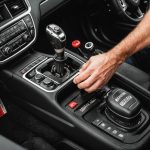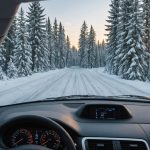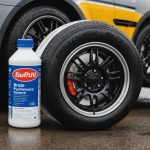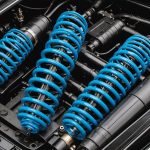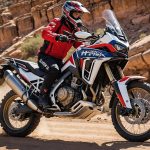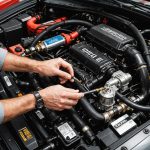Maximizing Windshield Defrosting Efficiency in Freezing Temperatures: Essential Tips for Cold Weather Performance
As the winter months approach, driving in cold weather can become a significant challenge, especially when it comes to maintaining clear visibility through your windshield. Here are some essential tips to help you maximize your windshield defrosting efficiency and ensure a safe and comfortable driving experience.
Understanding the Challenges of Winter Driving
Winter driving presents a unique set of challenges that can impact your vehicle’s performance and your safety on the road. Here are a few key factors to consider:
Also to discover : Ensuring Backup Sensor Reliability in Urban Driving: Tips for Savvy Drivers
Cold Temperatures and Vehicle Performance
Cold temperatures can affect various components of your vehicle, from the battery and tires to the windshield and defroster. For instance, cold weather can sap a battery’s strength, leading to issues when starting your car[3].
Ice and Snow
Ice and snow can quickly obscure your windshield, reducing visibility and increasing the risk of accidents. It’s crucial to have the right tools and maintenance tips to handle these conditions effectively.
In the same genre : Maximizing Safety: Essential Tips for Ensuring Your Vehicle”s Automatic Transmission Operates at Peak Performance
Maintenance Tips for Winter
Regular maintenance is key to ensuring your vehicle performs well in cold weather. Here are some critical areas to focus on:
Preparing Your Windshield for Winter
To maximize windshield defrosting efficiency, you need to prepare your vehicle properly for the cold weather conditions.
Winter Windshield Washer Fluid
Using winter windshield washer fluid is a must. This fluid is specially formulated to resist freezing, keeping your windshield clear and visibility sharp in snowy or icy weather. Regular washer fluid can freeze in cold temperatures, leading to cracked reservoirs and reduced effectiveness[1][5].
Wiper Blades
Ensure your wiper blades are in good condition. Winter wiper blades are designed to handle snow and ice better than standard blades. Replace your wiper blades if they show signs of wear or if they are not clearing the windshield effectively[3].
Defroster Maintenance
Make sure your defroster works effectively. When using your defroster, use fresh air from the outside to expel moist air and cool the interior, reducing the chance of fogging when the vehicle is next used[2][4].
Detailed Checklist for Winter Preparation
Here is a detailed checklist to help you prepare your vehicle for the cold weather:
Tires
- Check Tire Pressure: Cold weather can affect tire pressure, so make sure they’re set to the correct PSI.
- Tire Condition: Check for proper inflation, tread depth, and any signs of wear.
- Winter Tires: Consider installing winter tires, which are designed to provide better traction on icy roads[3].
Battery
- Test Battery Charge: Cold temperatures can weaken your battery, so test its charge and inspect the terminals for corrosion.
- Battery Maintenance: Ensure the battery terminals are clean and free from corrosion to maintain optimal performance[3].
Fluids
- Engine Oil: Ensure the engine oil is at the recommended level and consider switching to a winter-grade oil that flows more easily in cold temperatures.
- Coolant: Check the antifreeze level and ensure it is mixed correctly to prevent freezing.
- Transmission Fluid: Check the transmission fluid level to ensure smooth gear shifts.
- Windshield Washer Fluid: Use winter windshield washer fluid to prevent freezing[3][5].
Lights and Electrical
- Headlights, Taillights, and Turn Signals: Ensure all lights are working properly to maintain visibility and safety on the road.
- Heater and Defroster: Make sure the heater and defroster are functioning correctly to keep your windshield clear and your car warm[3].
Optimizing Defrosting Performance
To optimize your windshield defrosting performance, here are some practical tips:
Using the Right Defrosting Settings
- Fresh Air Mode: Switch to fresh air mode to expel moist air and cool the interior, reducing the chance of fogging[2].
- Defroster Settings: Use the defroster on the highest setting initially to clear the windshield quickly, then adjust as needed.
Additional Tips for Clear Visibility
- Scrape Ice and Snow: Always scrape ice and snow from your windshield before driving. Use a scraper or brush specifically designed for this purpose.
- Use a Microfiber Cloth: If your windshield fogs up while driving, use a microfiber cloth to wipe it clean. This can help prevent streaks and improve visibility.
Table: Comparing Winter and Standard Windshield Washer Fluids
| Feature | Standard Windshield Washer Fluid | Winter Windshield Washer Fluid |
|---|---|---|
| Freezing Point | Freezes in cold temperatures | Formulated to resist freezing |
| Effectiveness in Snow/Ice | Less effective in snowy or icy conditions | Specifically designed to handle snow and ice |
| Impact on Reservoir | Can crack reservoirs if frozen | Prevents cracking of reservoirs |
| Visibility | May leave streaks or residue | Provides clear visibility without streaks |
Real-World Examples and Anecdotes
The Importance of Winter Tires
One driver shared an experience where switching to winter tires made a significant difference in their driving experience. “I used to struggle with traction on icy roads, but after installing winter tires, I felt much safer and more confident driving in the snow,” they said.
The Consequences of Neglecting Maintenance
A truck driver once neglected to check his tire pressure before a long haul in cold weather. As a result, one of his tires blew out on the icy road, causing a significant delay and costly repair. “It was a hard lesson learned,” he said. “Now, I make sure to check all my vehicle’s systems before heading out in winter conditions.”
Ensuring Safety and Efficiency
Safety First
Safety is paramount when driving in cold weather. Here are some key safety tips:
- Slow Down: Reduce your speed to account for slippery roads.
- Use Low Gear: If you’re driving a manual transmission vehicle, use low gear when driving uphill in snowy or icy conditions.
- Avoid Sudden Movements: Sudden turns or braking can lead to loss of control on icy roads.
Efficiency Tips
To ensure your vehicle runs efficiently in cold weather:
- Regular Maintenance: Keep up with regular maintenance checks to prevent breakdowns.
- Plan Your Route: Plan your route to avoid areas with heavy snow or ice.
- Keep an Emergency Kit: Keep an emergency kit in your car, including items like a scraper, flashlight, and warm blankets.
Preparing your vehicle for winter driving is crucial for ensuring a safe and efficient driving experience. By using the right windshield washer fluid, maintaining your wiper blades, and following a detailed checklist for winter preparation, you can maximize your windshield defrosting efficiency and handle the challenges of cold weather with confidence.
Remember, regular maintenance and the right equipment can make all the difference between a smooth winter driving experience and one filled with delays and stress. Stay safe, and happy driving



